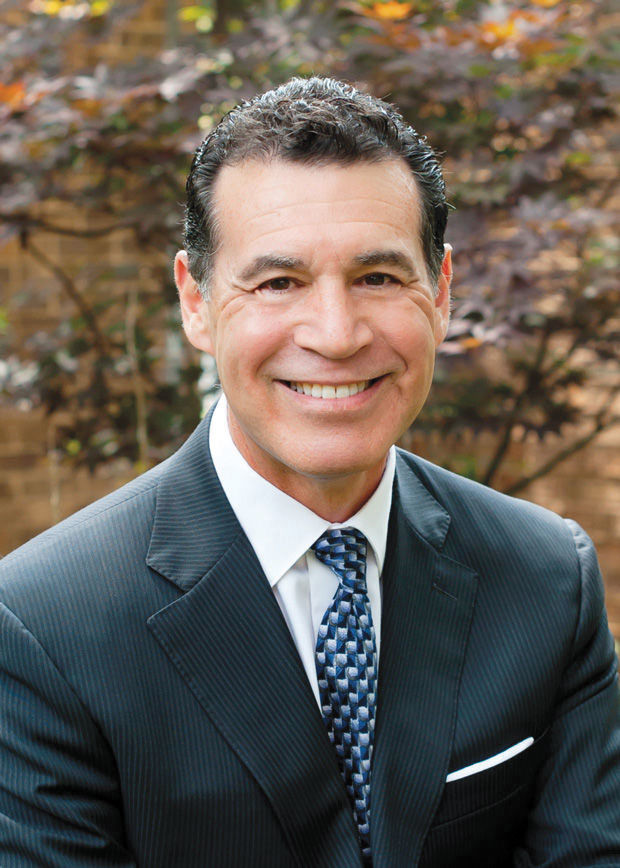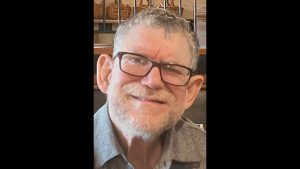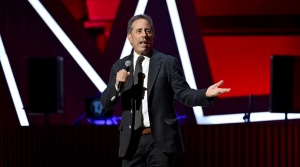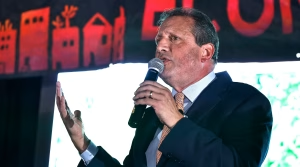Passover, the pandemic and a chance to delve deeper into our Jewish history, identity
Published April 2, 2021
This particular Passover observance, while it may be dominated by the external expressions inspired by time-bound practices, has presented us with an opportunity to recalculate our future by recalibrating our reason for being.
Most of us, myself included, are concerned with adhering to the traditional and accepted “halachic” practices of Passover to honor our past, keep them current and ensure their vitality for future generations. Dietary, ritual, material, liturgical, artistic and textual displays are dusted off for another year to help us mark our seasons and give us the sense of forward mobility. We find new energies in these displays of cultural and religious touchpoints as we open ourselves to optimism and regeneration.
For most of us, these displays may become rudimentary as a function of being Jewish, and, in so doing, we may tend to become mechanical; almost unthinkingly robotic with a touch of obsessiveness out of fear of offending either those around us or those who have come before us. In short, our annual Passover rituals may become necessary requisites for remaining a part of our Jewish identity and we may be observing Passover more out of fear of forgetting our past than helping us defining today as a message to a generation we will never see.
ADVERTISEMENT
It is clear that we are beginning to see a time when our current pandemic will reach the stage of an endemic presence (much like the common cold, seasonal flu or a new season of entertainment retreads). I’m sure many of us who were part of a seder this past week or an upcoming concluding seder have or will tie in last year’s experiences with this year’s, comparing and contrasting both so we can foretell what next year’s seder may allow us to construct.
I wonder if a new Haggadah is already in the works to reflect this time in our history. I’ve heard of many “homemade” Haggadot that contained references to our current conditions (as every year, we refresh the words of the traditional 14 sections). Let’s look back for a moment and try to rediscover, if you have yet to do so, why we continue to inculcate the regenerative power of inserting current mass defining events into our traditional base texts of the Haggadah. This practice, to me, is one of the most influential aspects of being Jewish, which I feel must be the program running in the background of every day of our lives; an essential part of our Jewish functional being.
The first section of the Torah that we will be reading, studying and hearing is taken from The Book of Exodus, Chapter 13:17 – 15:26 and an additional section from The Book of Numbers, Chapter 28:19 – 25. Our Haftarah is taken from The Book of Second Samuel, Chapter 22:1 – 51. While every year I find myself drawn to different phrases or sub-themes in this section (my personal history brings me to certain places in the pre-existing text each year), I find Exodus 13:19 has called out to me this season, and, looking more introspectively, the past year and a half.
ADVERTISEMENT
“And Moses took with him the bones of Joseph, who had exacted an oath (referencing The Book of Genesis, Chapter 50:25) from the Children of Israel, saying, ‘G-d will be sure to take notice of you: then you shall carry up my bones from here with you.’ ” (from the 1999 edition of the JPS TANACH).
This year, I am not reading about the physical remains of Joseph. I am not seeing this word “etzem” in bald-faced terms (as Judaism has always reminds us that the white spaces are to value as much as the black print on the parchment). Today, I am absorbing this word as the “essence” of Joseph. This essence adds a certain substance to the corpus of the Israelite / Jewish earthly presence. By carrying the bones of Joseph with us, we are continuing the oath that was demanded by Joseph at his time of death. This oath, as it preceded the Ten Commandments, started to prepare us to receive and perpetuate the most meaningful collective oath, in my opinion, in human history – the receiving of those same said Ten Commandments.
The Israelites first developed the body politic of collective oath taking, translated this so that each person could feel like, they themselves, were being addressed. When the individual is that deeply engaged, they become the living limbs animating the body of the spirit of the one who brought us to where we are today. We are literally anthropomorphizing historical content and animating that content in today’s context.
These six weeks between Passover and Shavuot will be a time when various Pirkei Avot (Ethics of the Fathers [Sages]) study sessions are offered in our community. I strongly encourage the attendance and participation in any of the sessions offered by congregations, Jewish institutions or at-home study groups. This six-week period of The Omer will conclude with Shavuot, our next of the Three Pilgrimage Festivals, which will be punctuated by the public reading of the Ten Commandments.
Please take this rare opportunity (rare as how many of us have experienced a pandemic such as this?) to connect with and learn from your chosen past, know that, while still in the midst of a novel and uncertain time, there are methods to help guide you toward a stronger future.
Though not exactly the same, we have been here before and we are still standing today, and not just because we eat matzah, open doors or ask questions (though that’s pretty cool, too). Will you be carrying the weight of collective guilt going forward, or are you going to bind yourself to the still present energy of our mutually accepted past? “…Arise, my beloved, my fair one, come away! For now, the winter is past…the blossoms have appeared in the land…” (Song of Songs, Chapter 2: 10-12 paraphrased) and new lives will be shaped, formed and cultured.
Cantor-Rabbi Ronald D. Eichaker serves United Hebrew Congregation and is a member of the St. Louis Rabbinical and Cantorial Association, which coordinates the weekly d’var Torah for the Light.














